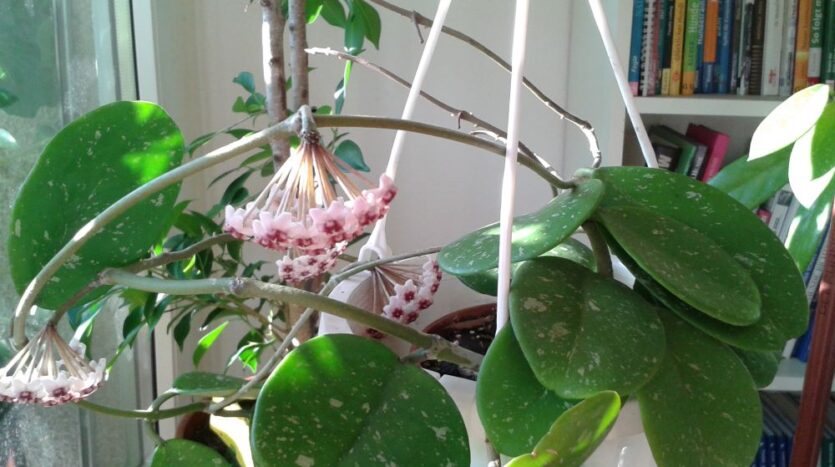The Best Soil Mix for Hoya Plants: Essential Ingredients for Thriving Growth
Hoya plants, commonly known as Wax Plants, have become a favorite among indoor plant enthusiasts due to their striking foliage, fragrant flowers, and relatively low-maintenance care requirements. However, to truly see your Hoya plant thrive, selecting the best soil mix is critical. A well-prepared soil not only provides the necessary nutrients but also supports healthy root development and overall growth.
Essential Characteristics of the Best Soil for Hoya Plants
Before we explore the specific ingredients for an ideal Hoya soil mix, it’s important to understand the characteristics the soil must have to support its natural growth patterns.
Drainage
Hoya plants are particularly sensitive to overwatering, which can lead to root rot—a condition that often spells disaster for the plant. Therefore, a soil mix that allows excess water to drain quickly is essential. Soil that retains too much water suffocates the roots, leading to fungal infections and eventual plant death.
Aeration
Well-aerated soil is crucial for Hoya plants, allowing oxygen to reach their roots. Compact soil blocks airflow, preventing oxygen from circulating around the roots, which can stunt growth. Incorporating materials that provide air pockets ensures healthy root function and strong growth over time.
Nutrient Retention
While Hoyas prefer fast-draining soil, they also need access to nutrients. The right soil mix should retain just enough moisture and nutrients to feed the plant but without holding excessive water. Balance is the key here—enough water to provide hydration, but not so much that the roots remain soggy.
Slight Acidity
Hoyas thrive in slightly acidic to neutral soil, with a pH range of about 6.0 to 6.5. This slight acidity helps with nutrient uptake, especially for essential minerals like nitrogen, phosphorus, and potassium, which contribute to the plant’s vibrant foliage and healthy growth.
Key Ingredients for the Ideal Hoya Soil Mix
Creating the perfect soil mix for Hoya plants involves combining a variety of materials that meet their drainage, aeration, and nutrient needs. Here are the essential components for crafting the best mix for your Wax Plant.
Orchid Bark
Orchid bark is one of the most important components of a Hoya soil mix. Derived from pieces of tree bark, it helps mimic the natural environment in which Hoyas grow—among the branches of trees where their roots cling to surfaces. The chunky texture of orchid bark promotes excellent drainage and aeration, preventing the soil from becoming compacted. This material is especially important for Hoyas because it allows their roots to “breathe,” reducing the risk of rot.
Perlite
Perlite is a volcanic rock that is processed into small, lightweight, and highly porous granules. When added to the soil, perlite improves both drainage and aeration, ensuring excess water moves through the soil quickly. Perlite also lightens the soil mix, keeping it from becoming too dense. This makes it easier for the roots to spread out and access the air and nutrients they need.
Coconut Coir or Peat Moss
Coconut coir and peat moss both serve the same purpose: moisture retention. While Hoya plants require well-draining soil, they still need some moisture around their roots. Coconut coir, made from the fibers of coconut husks, is an eco-friendly alternative to peat moss and offers excellent water retention without becoming soggy. Peat moss, on the other hand, is more readily available and slightly more acidic, which can help with nutrient absorption. Both options are effective at retaining the right amount of moisture in the soil.
Charcoal
Charcoal, particularly horticultural charcoal, is another valuable addition to a Hoya soil mix. It works by absorbing excess moisture and preventing soil toxins from building up, which can lead to root disease. Charcoal helps create a cleaner, healthier environment for the plant’s roots by improving drainage and preventing the growth of harmful bacteria.
Pumice or Lava Rock (Optional)
In especially humid environments, adding pumice or lava rock to the soil mix can further improve drainage. Both of these materials are lightweight and porous, helping to increase aeration and reduce the risk of water retention. If you live in a particularly wet or humid climate, including pumice or lava rock can prevent the soil from holding too much moisture, which can lead to root issues.
Creating the Perfect Hoya Soil Mix – Step-by-Step
Now that you know the essential ingredients, let’s put them together into the perfect soil mix for Hoya plants. Here’s a simple recipe you can follow:
- 40% Orchid Bark: Provides the base for excellent drainage and aeration.
- 30% Perlite: Improves soil texture and prevents compaction.
- 20% Coconut Coir or Peat Moss: Retains moisture while keeping the mix light and airy.
- 10% Charcoal: Helps absorb excess moisture and prevents soil toxins.
- Optional: Add 5-10% Pumice or Lava Rock for humid environments to further improve drainage.
Depending on your climate and the specific conditions in your home, you may want to tweak the mix slightly. For example, if you live in a dry climate, you can increase the amount of coconut coir or peat moss to retain more moisture. In contrast, if you live in a humid environment, adding more perlite or pumice will help the soil drain faster.
Conclusion
Choosing the best soil mix for your Hoya plants is essential for supporting their natural growth habits and ensuring they thrive indoors. By selecting ingredients like orchid bark, perlite, and coconut coir, you can create a well-draining, aerated, and nutrient-retaining soil mix that mimics their natural environment. With the right care and attention to watering and repotting, your Hoya plant will reward you with lush foliage and vibrant blooms. If you’re looking for more detailed guidance on caring for your Hoyas, you can check out Unsolicited Plant Talks, a great resource for learning how to keep these beautiful plants healthy and happy.








